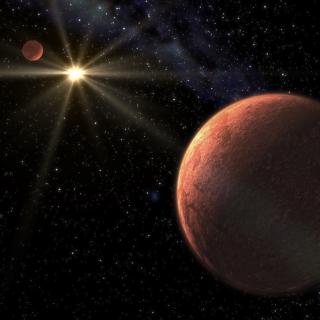Bibcode
Pinfield, D. J.; Burningham, B.; Lodieu, N.; Leggett, S. K.; Tinney, C. G.; van Spaandonk, L.; Marocco, F.; Smart, R.; Gomes, J.; Smith, L.; Lucas, P. W.; Day-Jones, A. C.; Murray, D. N.; Katsiyannis, A. C.; Catalan, S.; Cardoso, C.; Clarke, J. R. A.; Folkes, S.; Gálvez-Ortiz, M. C.; Homeier, D.; Jenkins, J. S.; Jones, H. R. A.; Zhang, Z. H.
Bibliographical reference
Monthly Notices of the Royal Astronomical Society, Volume 422, Issue 3, pp. 1922-1932.
Advertised on:
5
2012
Citations
71
Refereed citations
65
Description
We have searched the Wide-field Infrared Survey Explorer first data
release for widely separated (≤10 000 au) late T dwarf companions to
Hipparcos and Gliese stars. We have discovered a new binary system
containing a K-band suppressed T8p dwarf WISEP J142320.86+011638.1 and
the mildly metal poor ([Fe/H] =-0.38 ± 0.06) primary BD +01°
2920 (HIP 70319), a G1 dwarf at a distance of 17.2 pc. This new
benchmark has Teff= 680 ± 55 K and a mass of
20-50MJup. Its spectral properties are well modelled except
for known discrepancies in the Y and K bands. Based on the
well-determined metallicity of its companion, the properties of BD
+01° 2920B imply that the currently known T dwarfs are dominated by
young low-mass objects. We also present an accurate proper motion for
the T8.5 dwarf WISEP J075003.84+272544.8.
Related projects

Very Low Mass Stars, Brown Dwarfs and Planets
Our goal is to study the processes that lead to the formation of low mass stars, brown dwarfs and planets and to characterize the physical properties of these objects in various evolutionary stages. Low mass stars and brown dwarfs are likely the most numerous type of objects in our Galaxy but due to their low intrinsic luminosity they are not so
Rafael
Rebolo López